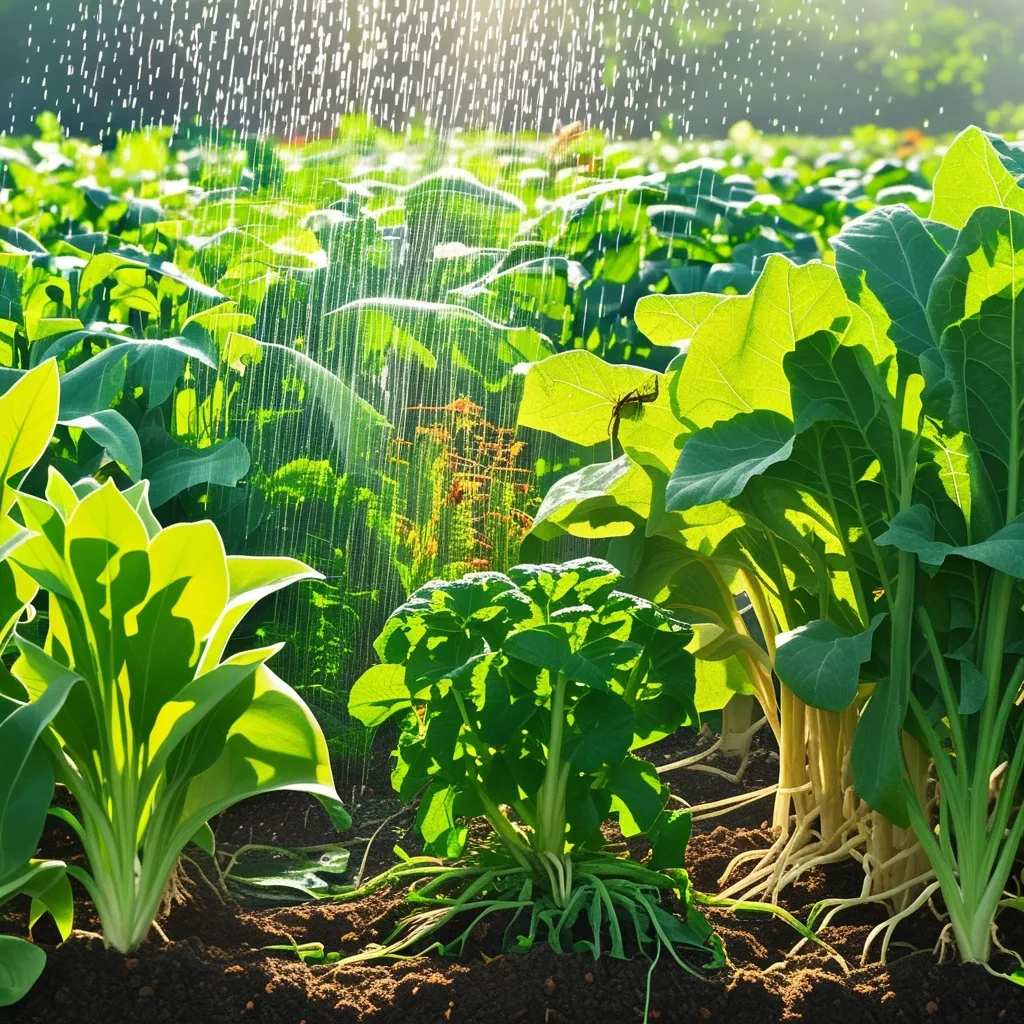Supercharging Crops: Nature’s Secret Weapons for Better Harvests
Ever wonder how we’re going to feed the world’s growing population? Well, scientists and farmers are working on some pretty cool tricks to supercharge our crops. It’s not about GMOs or crazy chemicals - we’re talking about tapping into nature’s own superpowers to help plants grow bigger, stronger, and more resilient.
Let’s dive into this fascinating world of supercharged crops and see how we might just revolutionize farming as we know it.
The Power of Phosphorus: More Than Just a Nutrient
You might remember phosphorus from high school chemistry, but did you know it’s like a secret sauce for plants? This stuff is crucial for everything from energy metabolism to DNA synthesis. It’s the difference between a plant that’s just surviving and one that’s thriving.
But here’s the kicker - a lot of our farmland is actually running low on phosphorus. It’s like trying to run a marathon on an empty stomach. Plants are clever, though. They’ve developed some neat tricks to deal with this problem.
Imagine your plant roots as tiny explorers, always on the hunt for more phosphorus. They can actually change their shape and direction to seek out phosphorus-rich patches of soil. It’s like they have their own GPS system!
And it gets even cooler. Plants can release special substances that help them unlock phosphorus that’s trapped in the soil. It’s like they’re picking the lock on a nutrient safe. By understanding these processes, farmers can give their crops a major boost just by making sure phosphorus is available at the right times.
Biostimulants: Nature’s Energy Drinks for Plants
Now, let’s talk about biostimulants. These are like nature’s own energy drinks for plants. They’re not fertilizers in the traditional sense - they don’t directly feed the plants. Instead, they help plants make better use of what’s already in the soil.
Think of biostimulants as personal trainers for plants. They don’t give the plant muscles, but they help it use its resources more efficiently. This means better nutrient uptake, improved photosynthesis, and plants that can handle stress like champs.
One of the coolest things about biostimulants is how they work with the soil. They help break down organic matter, making the soil healthier and more fertile. It’s like they’re setting up a gourmet buffet for the plants, with all the nutrients laid out and ready to go.
And when the going gets tough - like during a drought or heatwave - biostimulants have got the plant’s back. They help plants develop better roots, boost their antioxidant activity, and even kickstart their natural defense mechanisms. It’s like giving plants their own suit of armor against environmental stresses.
The Tiny Helpers: Microorganisms in Action
Now, let’s zoom in even closer and look at the microscopic world beneath our feet. The soil is teeming with life, and some of these tiny critters are the unsung heroes of plant growth.
We’re talking about microorganisms like rhizobacteria and mycorrhizae. These little guys form a symbiotic relationship with plants, helping them in ways you wouldn’t believe.
For instance, some bacteria act like tiny hormone factories, producing substances that stimulate plant growth. Others are like miniature locksmiths, helping to release nutrients that are locked up in the soil.
Mycorrhizal fungi are particularly impressive. They form a network of ultra-fine filaments that extend far beyond the plant’s roots. It’s like giving the plant a massive extension to its root system, allowing it to access water and nutrients from a much larger area.
These microorganisms also help plants deal with stress. They can trigger changes in the plant that make it more resistant to drought, heat, and even pests. It’s like having a personal bodyguard and health coach rolled into one!
Supercharging Photosynthesis: Giving Plants a Turbo Boost
Now, here’s where things get really exciting. Scientists are working on ways to supercharge the very process that powers plant growth: photosynthesis.
Some plants, like corn and sugarcane, have a souped-up version of photosynthesis called C4. It’s like they have a turbocharger for capturing and using carbon dioxide. Now, researchers are trying to introduce this C4 process into other crops, like rice.
Imagine if we could increase rice yields by 50% without using more water or fertilizer. That’s the kind of game-changer we’re talking about here. It’s not easy - it involves some pretty complex genetic engineering - but the potential payoff is huge.
Climate Change: A Double-Edged Sword for Plant Growth
Now, let’s talk about the elephant in the room: climate change. It’s causing all sorts of problems, but interestingly, it’s not all bad news for plants.
Higher levels of CO2 in the atmosphere can actually boost plant growth. It’s like giving plants more of the raw material they need for photosynthesis. In fact, global plant photosynthesis increased by 12% between 1982 and 2020, largely due to this effect.
But don’t start celebrating just yet. While plants might grow more in a high-CO2 world, they also need more nutrients to support that growth. It’s like trying to build more muscle without eating more protein - eventually, you hit a wall.
Plus, climate change brings other challenges like more frequent droughts and extreme weather events. So while plants might have more CO2 to work with, they’re also facing tougher growing conditions overall.
The Future of Farming: Blending Nature and Technology
So, what does all this mean for the future of farming? Well, it’s looking pretty exciting.
By combining our understanding of natural growth factors with cutting-edge biotechnology, we have the potential to create crops that are more productive and resilient than ever before.
Imagine fields of wheat that can thrive with less water, or tomato plants that can weather a heatwave without dropping their fruit. We’re talking about crops that not only produce higher yields but do so in a way that’s more sustainable and environmentally friendly.
The key is finding the right balance between harnessing nature’s own mechanisms and applying our technological know-how. It’s not about replacing natural processes, but about understanding them better and giving them a boost where needed.
For example, we might use biostimulants to enhance soil health and microbial activity, while also applying precision agriculture techniques to ensure each plant gets exactly what it needs, when it needs it.
Or we might develop new crop varieties that are better at partnering with beneficial microorganisms, creating a more robust and resilient agricultural ecosystem.
The possibilities are endless, and the potential impact is huge. We’re not just talking about bigger harvests - we’re talking about a more sustainable, resilient, and productive agricultural system that can help feed a growing world population while also taking better care of our planet.
Wrapping It Up: The Journey to Supercharged Crops
As we’ve seen, the quest to supercharge our crops is a fascinating journey that takes us from the microscopic world of soil bacteria to the cutting edge of genetic engineering.
It’s a story of discovery and innovation, but also one of rediscovery - of understanding and harnessing the incredible mechanisms that nature has developed over millions of years of evolution.
From the phosphorus-seeking roots to the turbo-charged photosynthesis of C4 plants, from the microscopic helpers in the soil to the potential of biostimulants, we’re uncovering nature’s own solutions to the challenges of plant growth.
And as we face the twin challenges of feeding a growing population and adapting to a changing climate, these insights couldn’t come at a better time.
The future of farming isn’t about high-tech solutions that work against nature. It’s about working with nature, understanding its processes, and giving them a boost where we can.
It’s an exciting time to be involved in agriculture. As we continue to unlock nature’s secrets, who knows what other surprises we might find? The next breakthrough in crop production could be hiding in a handful of soil, or in the genes of a humble weed.
One thing’s for sure - the plants of the future are going to be pretty super indeed. And that’s good news for all of us who like to eat!






